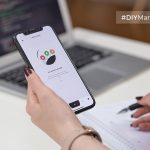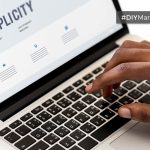How coffee shops use email marketing and data to drive loyalty & sales
It is 7 times more expensive to acquire a new customer than it is to keep one.
Any type of communication, whether it is through email, mobile, one on one or any other media a coffee shop use, is about building a relationship. By establishing frequent contact, you create trust and loyalty that can lead to an increase in sales.
The success of coffee shops greatly depends on the quality of the products, the design / interior of the shop and the marketing strategies employed by the company, but besides the obvious, these days data can play an important role too.
If coffee shops understand their customer data and use it in a clever way, they can communicate personalised emails to their target audiences based on the purchase history, specific preferences and needs of an individual.
Luckily we live in an age of ‘big data.’
People are on your database and list because they took action and signed up for your newsletter to receive relevant information / promotions and content from you, alternatively, they bought from you and you captured their information through their purchase. Your goal is to keep them signed up and provide them with unique, useful and engaging content. Remember, behind each email address is a person with buying power (ensure everybody on your base, opted in to receive information).
Besides newsletter sign-ups, coffee shops can use data collected by a POS system to build unique incentive programs with rewards and discounts on what their customers buy most frequently.
By linking the customer behaviour with their transactional behaviour, coffee shops can send them personalised emails based on their specific needs. Each individual on the database will get an email based on their specific buying behaviour / preferences. These custom emailers are a great way to build loyalty and trust.
Integrated loyalty programs are also a great way of capturing data.
Costa Coffee in the UK is a great example of a company that did it right. They found a way to build loyalty and create active brand preferences. The mechanic they used was simple: ”users will get five points per pound spent which can be ‘spent’ on other Costa Coffee products when the total passes a certain threshold.” They gave power to their customers and asked them to pick up a card in store and then register online. According to Campaign Live, 2010 they have more than 1.6 million email addresses.
As mentioned above, each of these email addresses belongs to a person with buying power. If Costa can send these individuals custom communications based on their specific needs and preferences, they are bound to see a positive impact on their bottom line. The key is to send them relevant information, not too often that will add value to their lives.
Sending welcome emails, new product mails, seasonal promotions, birthday email cards etc. are all ways in which email marketing can assist with brand loyalty and sales.
It will enable you to segment your database and target your audience with specific messages that will relate to them. You can segment your audience, greet them by name and tailor content that is specific to them. This will enable a coffee shop to connect with the audience in a stronger and more meaningful way; ultimately, this will lead to an increase in brand loyalty and sales.
According to Adobe’s August 2015 email marketing study, 63% of customers prefer to receive marketing promotions and offers through email. They’ve opted in to your database and they’ve asked to receive information, it is now up to you to engage with them and convert them into ‘sales’ and brand advocates.
With improving technology and data access, the future of email marketing and loyalty programs could mean a more personalised experience for every customer. Coffee shops will have to differentiate by offering a more personalised, intuitive, and rewarding loyalty experience than their competitors, this can be done via email communications.
And, we all know loyal customers spend more money…




